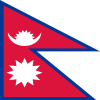INTELLECTUAL PROPERTY RIGHTS IN NEPAL

Opposition Term |
03 Months |
Registration Term |
07 Years |
First Renewal Term |
07 Years |
Subsequent Renewal Term |
07 Years |
The Patent, Design, and Trademark Act (2022/1965) is the primary law governing the mechanism of trademark registration in Nepal.
In Nepal, the Department of Industries (a sub-department within the Ministry of Industry), situated in the capital city of Kathmandu, deals with the entire process of trademark registration.
It is a signatory to the Paris Convention for the Protection of Industrial Property and the Convention establishing the World Intellectual Property Organization (WIPO).
Trademark registration provides statutory protection over the mark in Nepal as it follows the 'First to File' principle.
Nepal follows the 11th edition of Nice Classification. Multi-class trademark applications are not acceptable.
The third parties can file opposition actions against a trademark application within three (03) months following its publication date official gazette.
In Nepal, registered trademarks have a validity of seven (07) years from the date of registration, which can be further renewed indefinitely for successive periods of seven (07) years each.
The grace period to renew a trademark after the date of expiry is thirty-five (35) days.
The period for cancellation of a registered trademark based on non-use is one (01) year from the date of registration.
Nepal is a member of the Paris Convention for the Protection of Industrial Property.
The Patent, Design, and Trademark Act, 1965 deals with the mechanism of patent protection in Nepal.
In Nepal, an invention that satisfies the conditions of originality, novelty, inventive step, and industrial applicability, subjects to patentability. Process patent and product patent are the two types of patents that can be protected.
The types of patent applications that can be filed include Non-Convention Application, Convention Application, Divisional Application, and Patent of Addition.
In Nepal, an opposition against a patent application can be raised any time after the date of the patent grant.
The patent of invention lasts for seven (07) years from the date of the patent grant, which can be further renewed for two (02) terms of seven (07) years each. The patent annuities can be paid any time before the due date.
The Patent, Design, and Trademark Act, 1965 governs and deals with the mechanism of registration of industrial designs in Nepal.
The types of industrial design applications that can be filed in Nepal include only the Non-Convention Application.
Utility model protection isn't provided under industrial design protection in the nation.
Opposition against an industrial design application can be raised within three (03) months from the date of publication of the industrial design in the official gazette.
The total duration of industrial design registration in Nepal is fifteen (15) years from the date of registration. The initial registration term is five (05) years, which is further extendible for two (02) terms of five (05) years each upon payment of the renewal fee.
The time frame for payment of the renewal fee before the due date is three (03) months.
There is a grace period of six (06) months to renew a registered industrial design.
Nepal is a member country of the World Intellectual Property Organization (WIPO). It is also a signatory to the Berne Convention for the Protection of Literary and Artistic Works and the Agreement on Trade-Related Aspects of Intellectual Property Rights (TRIPS).
The Copyright Act, 2059 (2002) is the basic legislation governing copyright protection in Nepal.
Nepal Copyright Registrar's Office handles copyright registration, recording of copyright transfers, and other administrative aspects of copyright law.
The standard copyright protection term lasts for the lifetime of the author plus fifty (50) years following his death. However, the duration of copyright protection varies depending on the type of work.
The copyright protection term for applied art and photographic works is twenty-five (25) years from the date of creation.

